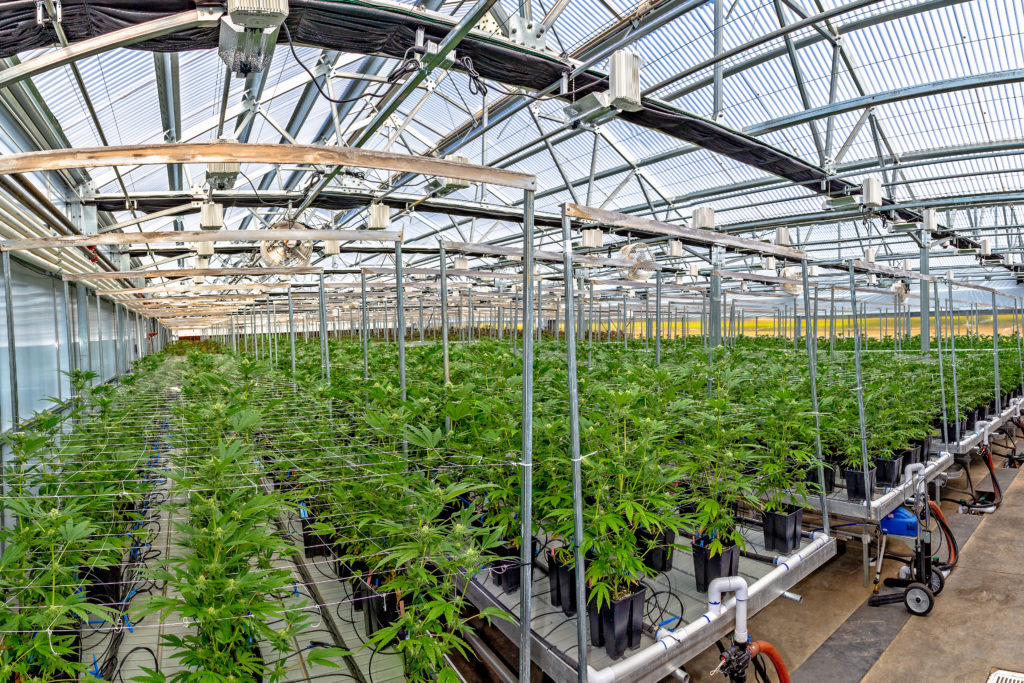Success in the Cannabis Industry: What Emerging Cannabis Cultivators Should Know
As a young and exciting sector, the cannabis industry is attractive to entrepreneurs eager to stake a claim in a growing market. While the potential of the cannabis industry is massive, the complexities make getting a facility operational more challenging than traditional real estate asset classes. But doing your research, starting out with the right team, and being resilient can lead you to success.

Researching Cannabis Regulatory Hurdles Across Jurisdictions
Regulatory hurdles are one of the industry’s most significant and complicated challenges; they require time and dedication to understand the nuances. Each jurisdiction has its own set of rules and standards. For example, each state and local municipality has different set-back requirements for establishing strict guidelines that identify minimal distances from schools, daycares, places of worship, etc.
Additionally, since the Federal government has not federally legalized cannabis, interstate commerce is still prohibited. This means cannabis operators are growing, processing, and manufacturing only in the state where the cannabis is sold. This restriction increases limitations in the industry and leads to heavier competition for licenses, viable real estate sites, available building materials and equipment, and local expertise. Site due diligence is a critical component early on, as specific site locations will be listed on the license application. You will need to understand your facility’s site requirements prior to site selection.
Managing Expectations: Delays, Facility Demands, & Revenue
In fact, one of the most frequent frustrations experienced in this industry is the time it takes to make progress. Many seasoned veterans in the cannabis sector plan for twice the amount of time a traditional project would take when building-out cannabis cultivation, processing, or manufacturing facilities. As Patrick Hidder, Principal, Controlled Environment Agriculture (”CEA”), ARCO/Murray, noted at the recent Bisnow National Cannabis Summit in Chicago, “things don’t move at the pace you’re used to.”
That slow pace is partly due to regulatory hurdles, but also due to the need to ensure you can meet the power and utility demands required to properly operate a state-of-the-art facility. Because cannabis cultivation facilities require substantial power to operate, power load demands often require utility companies to upgrade infrastructure. This causes significant delays in receiving ample power from the grid to your facility.
While cultivators are focused on securing their licenses and understanding the viability of real estate locations, considering power availability is often an oversight until it is too late. Hidder adds, “from an engineering standpoint, it starts and ends with power. A lot of the time it’s going to take your utility companies 24-36 months to bring you power.”
Growers and capital partners may have expectations of revenue and profitability that are not realistic, considering these challenges. Delays with utility providers may require licensees to get an extension before they are able to start earning revenue. The potential snags are numerous and interwoven. On the bright side, engaging a trusted general contractor can help tackle some of these challenges from the onset.
ARCO/Murray also fields a specialized team called ARCO/Murray Power Solutions (“AMPS”) that can take an early look at utility needs and determine key details like:
- Energy Load Profile / Energy Modeling
- Financing
- Equipment Procurement
- Equipment Installation & Commissioning
- Grid Deliverability & Utility Rates
As Hidder noted, “There are other solutions for power. You’re not always reliant on the grid.” It is possible to incorporate solar electricity, gas turbines, and combined heat and power (CHP) systems into a project. However, these are complex combinations designed specifically for each project – another reason why these projects take more time and require specialized skills.
Building a Successful Team to Launch Your Cannabis Cultivation Project
The most effective way to stack the deck in your favor is by engaging with an experienced team as early as feasibly possible. Anyone aiming to develop a cannabis operation will depend on experts that can navigate the process. A trusted general contractor, legal team, and broker will help to maximize the efficiency of the process. Additionally, maintaining strong relationships with local municipalities and utility professionals is especially advantageous to an operation’s success.
With experience building large-scale facilities across the United States and Canada, the ARCO/Murray CEA team has specialized our design-build approach to meet the needs of CEA facility construction. This has enabled us to offer more cost-effective and substantially faster project completions to our clients. We are also able to mitigate some of the risks associated with a largely inexperienced and developing industry. Relying on our team of in-house architects, engineers, electrical designers, and cultivation facility design experts streamlines the process markedly.
Working with a design-build firm will give you access to a different level of expertise. Design, engineering, and construction teams are all working together to add value up front and lock in material pricing earlier in the process. This can help minimize material cost escalations and delays, so your project can stay on-time and within budget.
You Determine Your Success
While the cannabis industry can be a challenging sector to compete in, the potential for success is real and substantial. Anyone in the cannabis world will tell you – everything takes longer, costs more, and is harder – compared to traditional real estate asset classes. But the strong and resilient will survive. Patrick Hidder adds, “if you are new to this space, your grit and determination are going to govern your success.”